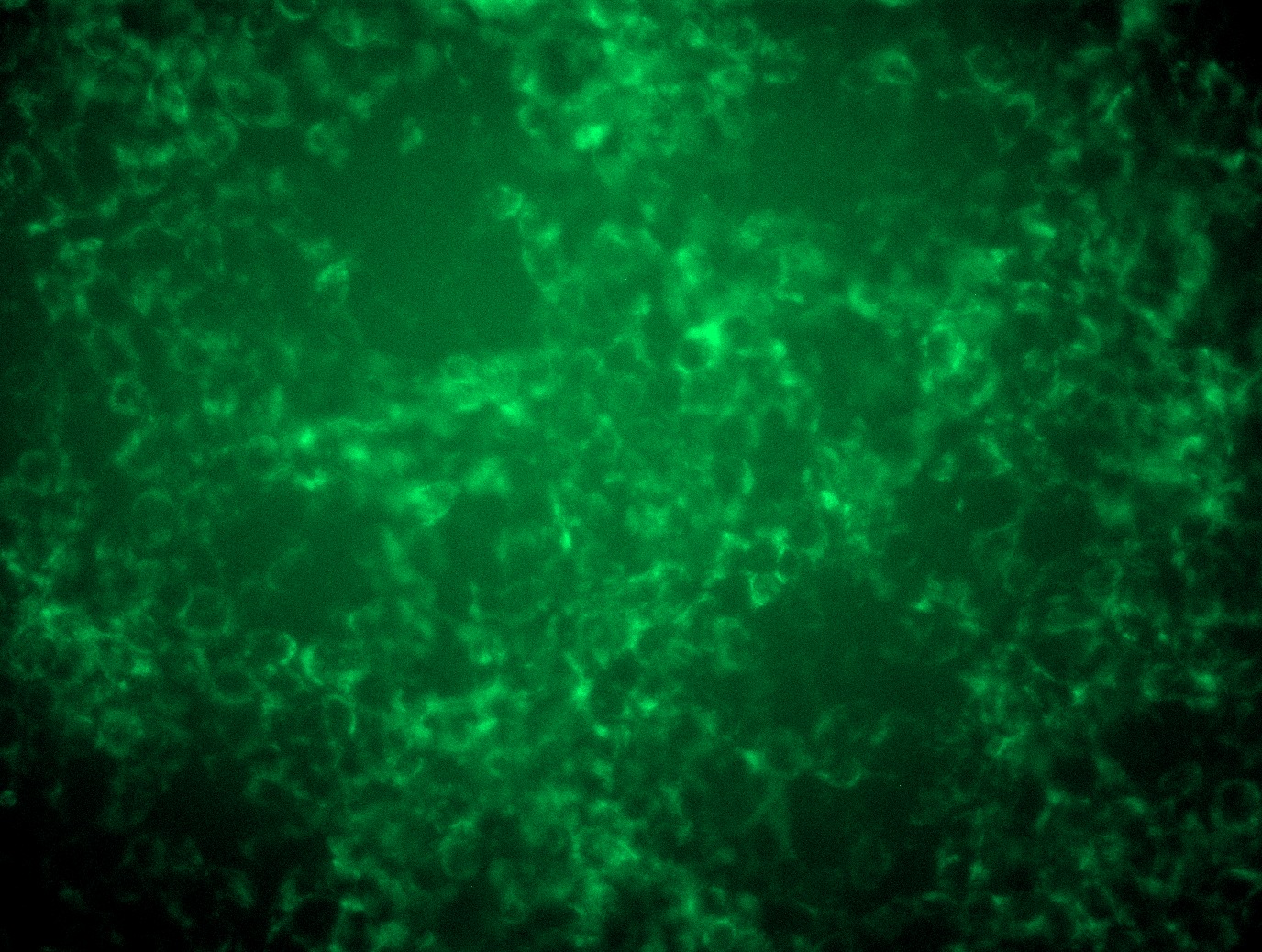PRODH2 (NM_021232) Human Tagged ORF Clone Lentiviral Particle
CAT#: RC215144L2V
- LentiORF®
-

Lenti ORF particles, PRODH2 (mGFP-tagged) - Human proline dehydrogenase (oxidase) 2 (PRODH2), 200ul, >10^7 TU/mL
Lentiviral Particles: DDK DDK w/ Puro mGFP w/ Puro
Buy this product and get 50% off on the Lenti RapidTiter kit. Use Code: Rapid50
USD 365.00
Specifications
| Product Data | |
| Type | Human Tagged ORF Clone Lentiviral Particle |
| Tag | mGFP |
| Symbol | PRODH2 |
| Synonyms | HSPOX1; HYPDH |
| Mammalian Cell Selection | None |
| Vector | pLenti-C-mGFP |
| ACCN | NM_021232 |
| ORF Size | 1608 bp |
| Sequence Data |
The ORF insert of this clone is exactly the same as(RC215144).
|
| OTI Disclaimer | The molecular sequence of this clone aligns with the gene accession number as a point of reference only. However, individual transcript sequences of the same gene can differ through naturally occurring variations (e.g. polymorphisms), each with its own valid existence. This clone is substantially in agreement with the reference, but a complete review of all prevailing variants is recommended prior to use. More info |
| OTI Annotation | This clone was engineered to express the complete ORF with an expression tag. Expression varies depending on the nature of the gene. |
| Reference Data | |
| RefSeq | NM_021232.1, NP_067055.1 |
| RefSeq Size | 1677 bp |
| RefSeq ORF | 1383 bp |
| Locus ID | 58510 |
| UniProt ID | Q9UF12 |
| Cytogenetics | 19q13.12 |
| Protein Pathways | Arginine and proline metabolism, Metabolic pathways |
| MW | 58.7 kDa |
| Gene Summary | The protein encoded by this gene catalyzes the first step in the catabolism of trans-4-hydroxy-L-proline, an amino acid derivative obtained through food intake and collagen turnover. One of the downstream products of this catabolism is glyoxylate, which in people with disorders of glyoxalate metabolism can lead to an increase in oxalate levels and the formation of calcium-oxalate kidney stones. Therefore, this gene may serve as a therapeutic target against primary hyperoxalurias (PH). This gene is similar to proline dehydrogenase (oxidase) 1, a mitochondrial enzyme that catalyzes the first step in proline catabolism. [provided by RefSeq, Jan 2017] |
Documents
| Product Manuals |
| FAQs |
| SDS |
Resources
{0} Product Review(s)
Be the first one to submit a review






























































































































































































































































 Germany
Germany
 Japan
Japan
 United Kingdom
United Kingdom
 China
China

